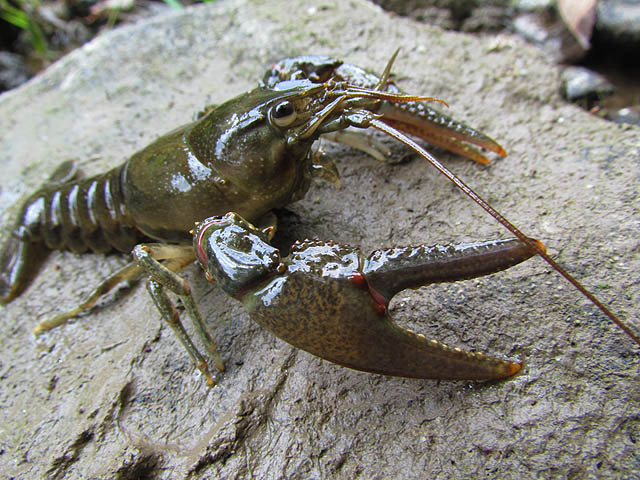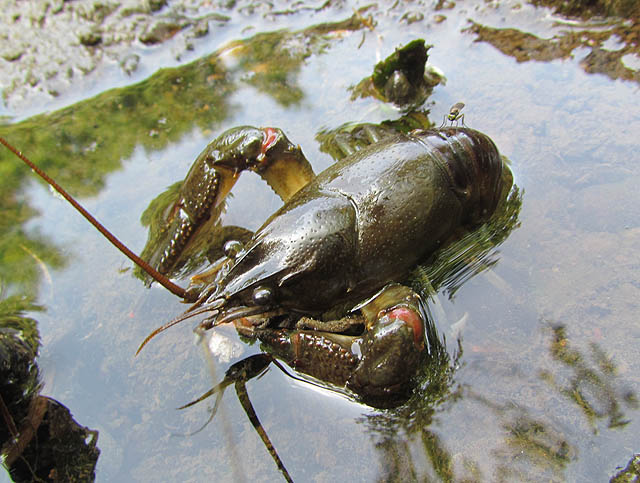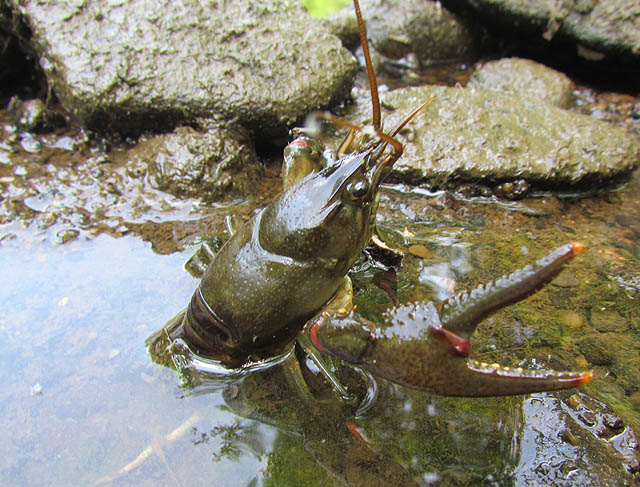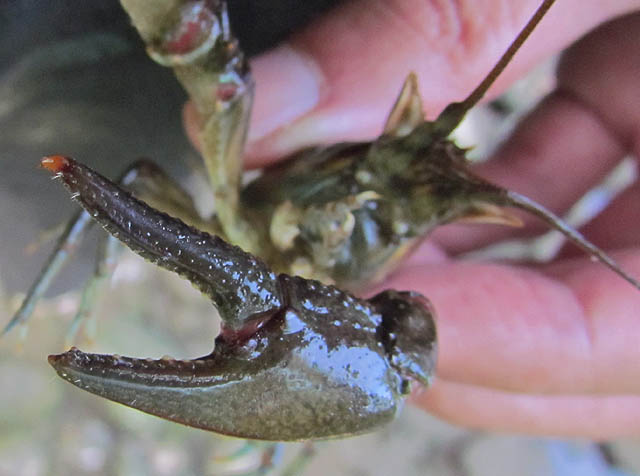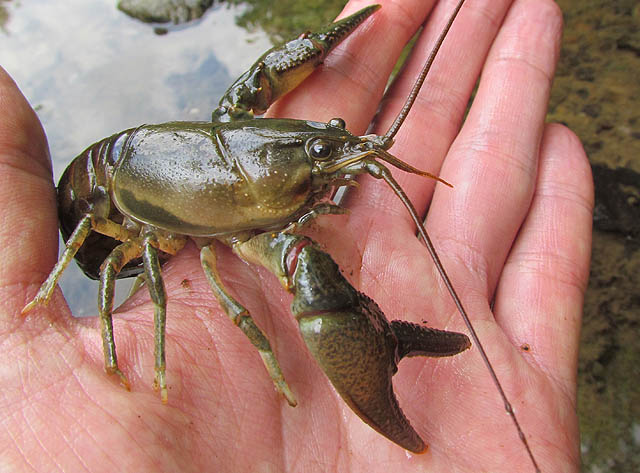Freshwater crayfish are a wonderfully diverse group of organisms with over 605 described species of freshwater crayfish distributed throughout North America, Australia, southern South America, Asia, Europe, Madagascar and New Zealand.
They come in a variety of sizes, from the members of the dwarf crayfish, which reach less than an inch as adults, to the world’s largest freshwater invertebrate, the endangered Tasmanian Giant Freshwater Crayfish, which reaches lengths over 15 inches and weights of over 11 pounds.
These beautiful creatures come in many colors, including red, blue, orange, green, brown, and even white. There are crayfish with spots, stripes, and various patterns. They also have a degree of ecological variation, inhabiting four main habitat types: fast flowing streams (like where this one was caught), mud burrows, slow water species (ponds and lakes) and cave species.
Like their relatives, lobsters and crabs, Crayfish are crustaceans. They are omnivores and will eat almost anything, plant or animal, live or dead. They belong to the order Decapoda, meaning 10 feet – 4 pairs of legs and 2 pincers. They are not afraid to use those pinchers to defend themselves or to start fights with other Crayfish.
Crayfish have long been used in research to determine the role of vitamin A in vision. They are also a food source for people as well as bait for fishermen. Crayfish have an extraordinary sense of smell. It is estimated that 40% of their brain is devoted to the sense of smell, as opposed to less than 1% of a human’s.
Some people keep Crayfish as pets – including me. Whenever I walk near my the tank, my Crayfish will come running out of its hiding place with its claws above its head, anticipating that I will feed it. Let’s face it: Crayfish may be smarter than we think.


